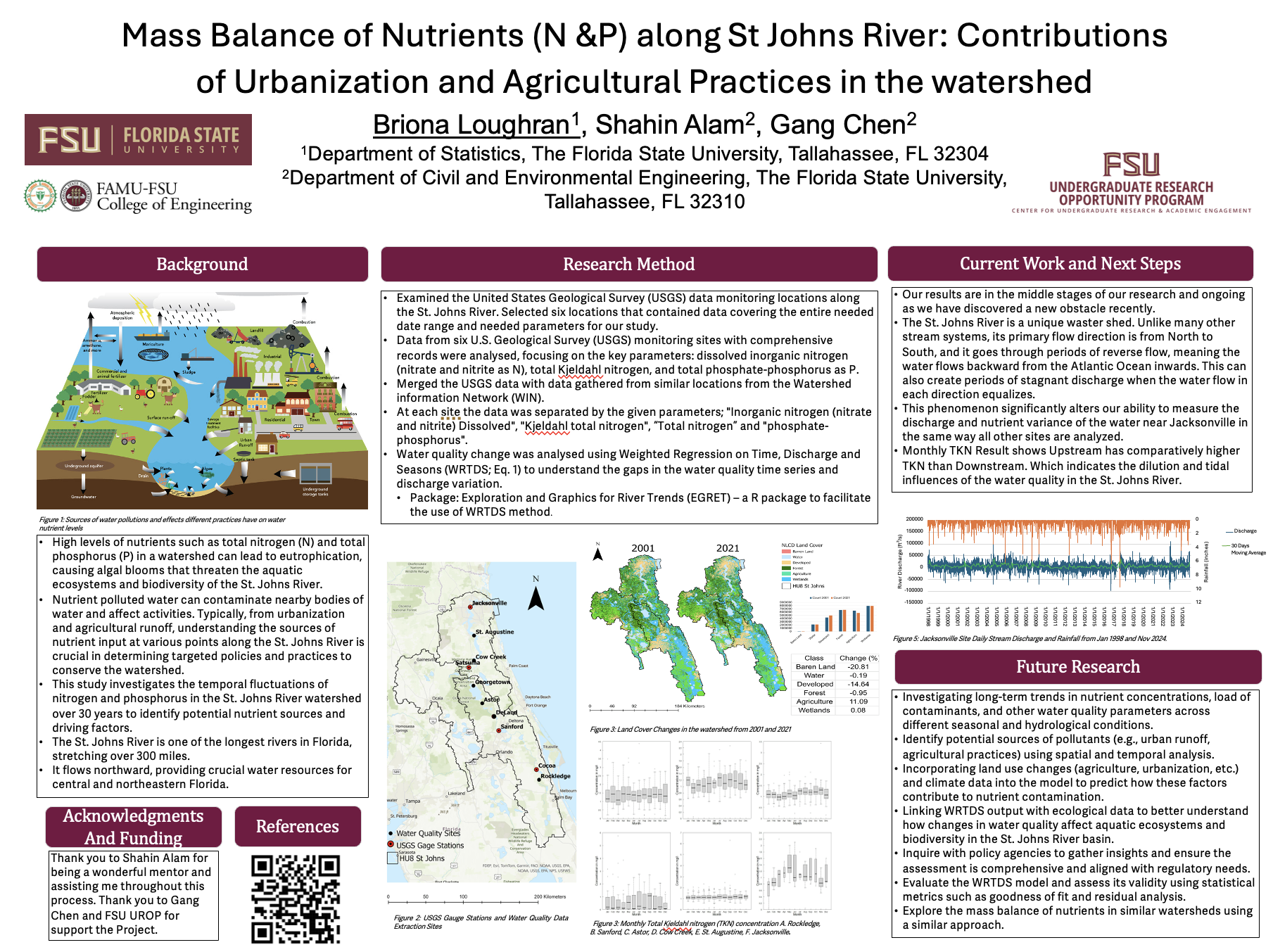Research Symposium
25th annual Undergraduate Research Symposium, April 1, 2025
Briona Loughran Poster Session 2: 10:45 am - 11:45 am/ Poster #48
BIO
I’m a second year student double majoring in Environmental Science and Statistics. I grew up in Boulder Colorado and spent a lot of time outside in nature which helped spark my interest in environmental science. Getting involved in environmental research seemed like a great way for me to combine all my academic and personal interests and work towards my long term career goals. Data analysis, especially when it pertains to the environment, is a field I'm very interested in pursuing for my future. I really enjoyed participating in this project and learning so much about studying water quality.
Mass Balance of Nutrients (N &P) along St Johns River: Contributions of Urbanization and Agricultural Practices in the watershed
Authors: Briona Loughran, Shahin AlamStudent Major: Environmental Science and Statistics
Mentor: Shahin Alam
Mentor's Department: Civil and Environmental Engineering Mentor's College: Engineering Co-Presenters:
Abstract
Urbanization and agricultural runoff are primary contributors to nutrient loading, making identifying nutrient sources along waterways critical to inform targeted management strategies. This study investigates the temporal fluctuations of nitrogen and phosphorus in the St. Johns River watershed over 30 years to identify potential nutrient sources and driving factors. Data from six U.S. Geological Survey (USGS) monitoring sites with comprehensive records were analyzed, focusing on key parameters: dissolved inorganic nitrogen (nitrate and nitrite as N), total Kjeldahl nitrogen, and total phosphate-phosphorus as P.
These datasets were integrated with water quality information from the Florida Department of Environmental Protection’s Watershed Information Network (WIN) to assess spatial and temporal nutrient trends. Long-term changes in water quality were evaluated using the Weighted Regression on Time, Discharge, and Season (WRTDS) model to quantify nutrient load variations to discharge patterns, seasonal dynamics, coastal wind influences, urban development, and agricultural activities. Additionally, shifts in land use over the study period were examined to assess their impact on nutrient levels.
We hypothesise that areas experiencing more urban development will exhibit higher nutrient concentrations compared to regions dominated by natural wetlands. Furthermore, we expect that nutrient levels will show an upward trend over the next 30 years, corresponding with the expansion of developed land within the watershed.
Keywords: Nutrients, Water Quality, St Johns River


